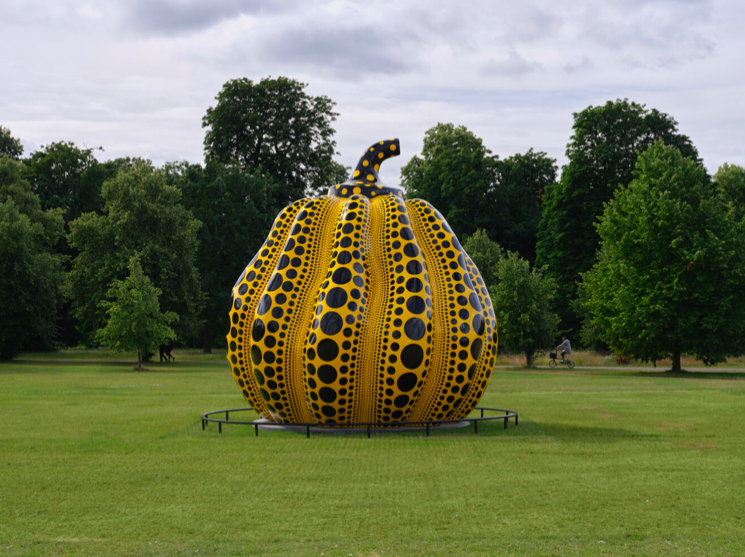Serpentine and The Royal Parks have unveiled Pumpkin (2024), a new 6-metre tall sculpture by much-loved Japanese artist Yayoi Kusama. Pumpkin (2024) marks a return to Serpentine for Kusama, who had her first retrospective exhibition in Britain at the gallery in 2000. Pumpkin can be found by the Round Pond in Kensington Gardens until 3rd November, 2024.
The work on view in Kensington Gardens is Kusama’s tallest bronze pumpkin sculpture to date, standing at 6 metres tall and 5.5 metres in diameter. Installed prominently by the Round Pond, Pumpkin (2024) can be seen from a wide variety of viewpoints and perspectives creating an intriguing dialogue with the surrounding environment of the Park.
Yayoi Kusama
Known for her immersive installations, large-scale sculptures and intricate paintings, Yayoi Kusama often features kabocha, or pumpkin, in her work. Since 1946 Kusama’s pumpkins have taken many forms, colours and shapes, but their surfaces are consistently covered in the artist’s signature repeating polka dot pattern.
Kusama’s relationship to the kabocha is rooted in her childhood – the artist’s family cultivated the plant’s seeds and their home was surrounded by fields of this squash. Pumpkins frequently appear as stand-ins for self-portraits. Kusama admires them for their everyday quality, hardiness and unique, frequently humorous forms. She has said ‘Pumpkins have been a great comfort to me since my childhood. They speak to me of the joy of living. They are humble and amusing at the same time, and I have and always will celebrate them in my art.’
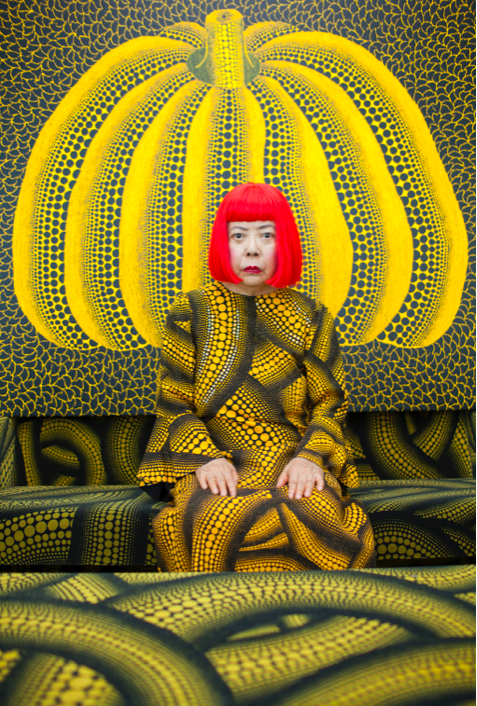
Gerhard Richter
As well as Kusama’s Pumpkin, visitors to Kensington Gardens can experience German luminary Gerhard Richter’s colourful sculpture STRIP-TOWER (2023). The Kusama and Richter sculptures are the latest in a long-standing series of public presentations in The Royal Parks since Serpentine’s foundation in 1970.
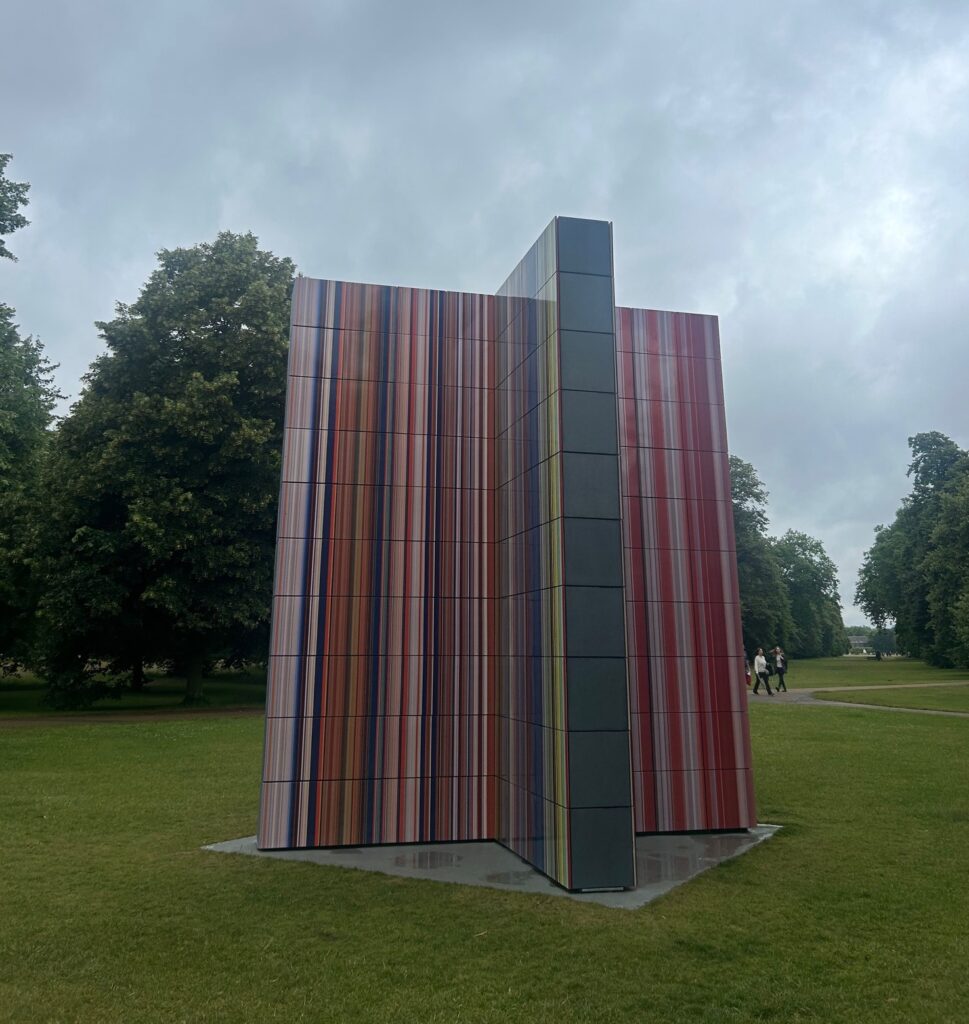
Yinka Shonibare
Yinka Shonibare takes over Serpentine South gallery until 1st September with Suspended States, his first London solo exhibition in over 20 years.
Suspended States features two new major installations – Sanctuary City (2024), a room of miniature buildings representing places of refuge for persecuted and vulnerable groups, and The War Library (2024) consisting of 5,000 books bound in Dutch wax print representing conflicts and peace treaties.
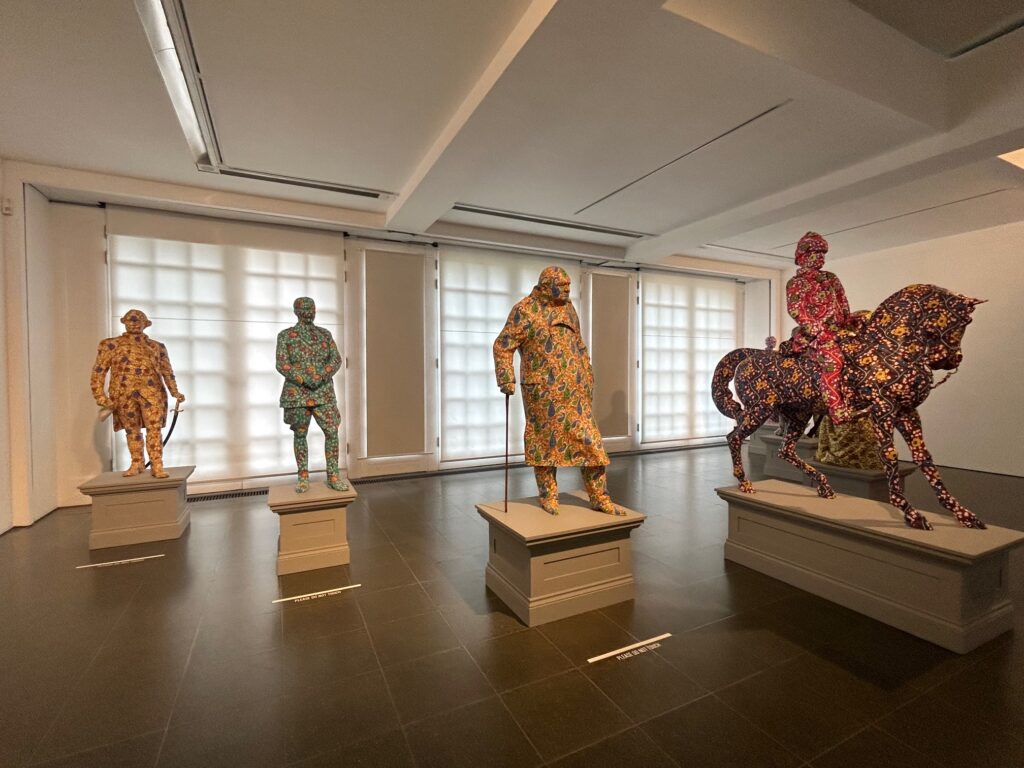
Yinka Shonibare CBE has used Western art history and literature to explore contemporary culture and national identities during a 30-year career. Suspended States explores how systems of power affect sites of refuge, debates on public statues, the ecological impact of colonialisation and the legacy of imperialism on conflict and consequential attempts at peace. Throughout the exhibition Shonibare’s signature use of Dutch wax print symbolises the tangled relationship between Africa and Europe. This brightly coloured fabric was inspired by Indonesian batik designs, mass-produced by the Dutch and eventually sold to British colonies in West Africa, where it later was referred to as ‘African print.’ In Decolonised Structures (2022-2023) the artist paints these patterns on his smaller-scale replicas of London’s large public sculptures. Reconstructing colonial figures such as Queen Victoria and Herbert Kitchener, Shonibare questions the role and presence of these monuments. Shonibare also draws links between the history of xenophobia and the impact of colonisation on the environment in his quilts, including his new series African Bird Magic (2024).
Meanwhile at Serpentine North, Judy Chicago takes over the galleries with a solo exhibition titled Revelations, Minsuk Cho’s Serpentine Pavilion Archipelagic Void presides over the adjacent gardens, and Atta Kwami’s mural DzidzƆ kple amenuveve (Joy and Grace) (2021-22) graces the exterior as part of the public art programme until 30th September.
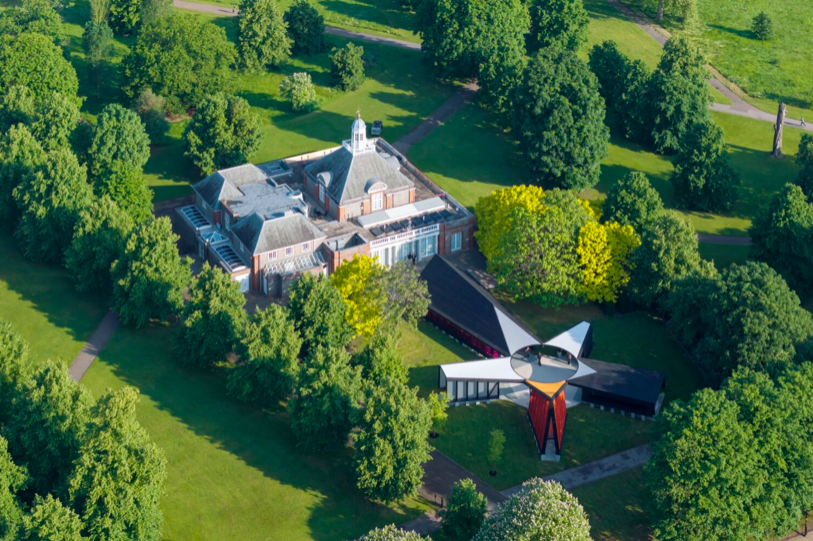
Minsuk Cho
Minsuk Cho was commissioned to create the 23rd Serpentine Pavilion and he traced the history of past Serpentine Pavilions, observing that they often emerge as a singular structure situated at the centre of the Serpentine South lawn. To explore new possibilities and previously untold spatial narratives, Cho approaches the centre as an open space. Cho’s Pavilion Archipelagic Void is composed of five ‘islands’, built predominantly in timber and supported by identical footings that adapt to the slightly sloping topography of the site. The layout references traditional Korean houses that feature a madang, an open courtyard located at the centre.

Revelations is Judy Chicago’s largest solo presentation in a London institution, and takes its name from an unpublished illuminated manuscript Chicago penned in the early 1970s whilst creatingThe Dinner Party (1974–79) – a monumental installation that symbolises the achievements of 1038 women, now permanently housed at the Brooklyn Museum, New York. Organised thematically around the manuscript’s chapters, the exhibition focuses on drawing – a medium Chicago has explored for over six decades.
Judy Chicago ‘Revelations’ is at Serpentine North Gallery until 1st September, 2024.


